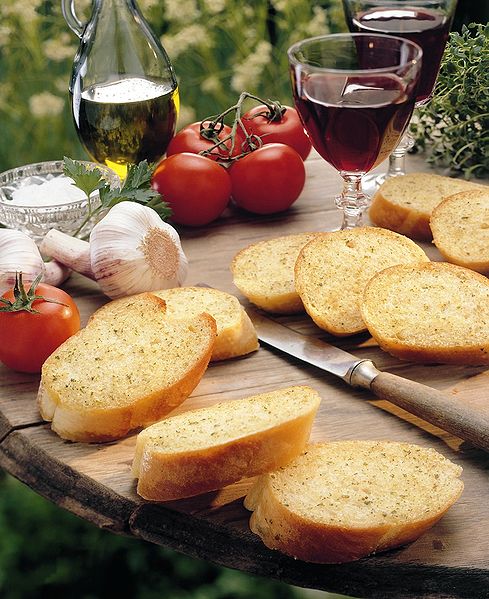Aldo Santini is fun to read: he begins his discussion of crostini in La Cucina Maremmana by observing that he had no intention of mentioning them when he began working on the book, since those living in the poorest part of Tuscany were lucky to have anything to eat, much less appetizers. However, wherever he went as he researched the book they appeared, and he concludes with the observation that they're rather like the teenage majorettes who lead the bands in Italian small town parades -- not seductive, but guaranteed to bring a smile.
Antipasti vary as much as any other facet of Italian cooking -- from the delicate flans, chicken in carpione (a pickled sauce), rabbit salad, minced raw beef and dozens of other things sufficient to make a meal by themselves in Piemonte, to hardly any antipasti at all in Naples, until quite recently (according to Jeanne Francesconi, author of La Cucina Napoletana). Tuscany falls somewhere in the middle; no festive meal is complete without a selection of crostini.
What are crostini?
Thin slices of lightly toasted bread, with a variety of toppings, generally patés moist enough to be easily spreadable. Though one sometimes encounters crostini made with slices of pane casalingo, Tuscan unsalted bread (see The Artisan for a discussion of bread types and recipes), Artusi suggests one use fine grained bread baked in a bread tin (because of its regular shape), and more elegant Tuscan bakeries have special crostino loaves with the profiles of the suits of a deck of cards. In their absence, a long thin loaf such as a baguette will work well (slice it on a diagonal, into half-inch slices). The topping should be spread about a quarter-inch thick.
In addition to bread, you can also use polenta squares, cut to the same size and fried for a few minutes, or until crisp and golden, in hot oil. They're especially good with mushroom sauce, but are also quite nice with the most traditional crostino spread, which is made with chicken livers and sage.
Unlike some dishes, which are only served in certain seasons, crostini are good year round. You may wish to make just one kind, or several so your guests can choose what they prefer. What to serve with them? Either a robust white, for example Vernaccia di San Gimignano, or a zesty red wine -- a Chianti Classico d'annata would be perfect. And a platter of cold cuts, including prosciutto, salame, capocollo, and perhaps finocchiona.

